“Fire and Life Incarnate”: A Retrospective of Claremont’s X-Men, Part 2
One of the earliest tasks that Chris Claremont had set for himself after taking over Uncanny X-Men was empowering the female characters on his team. He“d been influenced by strong women from an early age, and this had a powerful impact on his writing. Sometimes it was just a matter of including strong personalities in the cast, as he did with Moira MacTaggart and Storm early on. However, Claremont had also inherited female characters that he had to decide a direction for.
Perhaps the ultimate example of this is his development of Jean Grey. Up until Claremont had found her, Jean was not a character that had been deeply explored, even though she was one of the original five X-Men. Up until that point, she hadn“t had any memorable stories that were truly about her, and very often she was a love interest to other X-Men. Even at the start of the Wein/Claremont era, Jean was prominently used in that role. However, it“s notable that Jean was one of the X-Men who walked away from the team after Giant-Sized X-Men #1, with the idea of pursuing a life outside of the group. She would eventually rejoin the team a few issues later, but with a far different concept than anyone could have imagined.
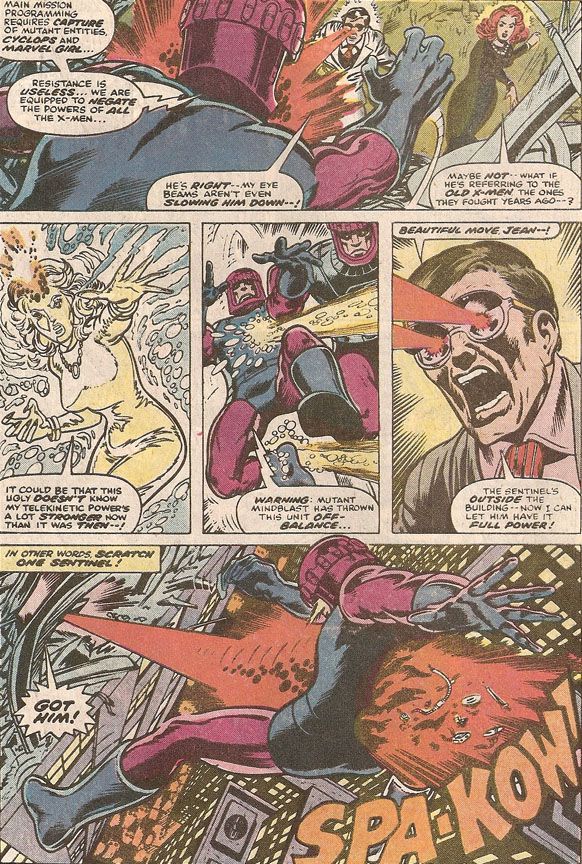
Jean officially made her return with Uncanny X-Men #98, which as Claremont admitted was “something of a scheduling bind”“ because they needed a big event for X-Men #100. Jean had not intended to come back in any official way, but as a reluctant heroine who was there because Cyclops was still the team leader. However, just being associated with the X-Men is enough to be targeted by the team“s enemies, a point that Claremont would make more than once during his tenure. In this case, it was by Stephen Lang, who had rebuilt the Sentinels based on technology left by Bolivar Trask. We would later find out that Lang had been funded and supported in secret by Sebastian Shaw and the Hellfire Club, at that time a significant background player and not yet an open threat. This would lead to a series of events, culminating in the birth of the Phoenix.
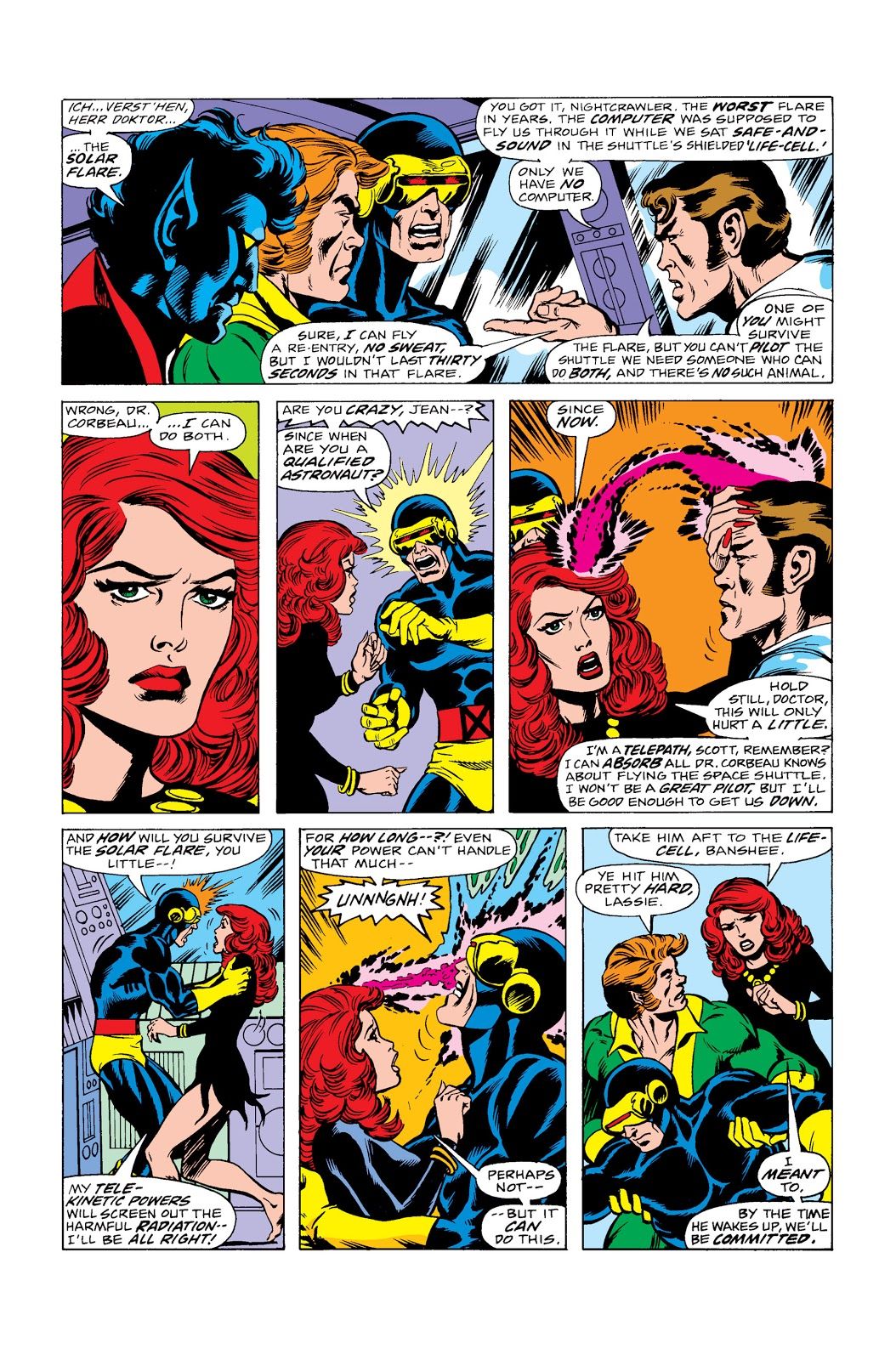
The Stephen Lang arc is mostly not that memorable aside from a few things””the opening setup, the revelation that Logan“s claws retracted from his arms, and the ending. Lang is not a terribly memorable villain, the X-Men androids were a goofy idea even at the time, and the story drags out a bit long. However, the bookends are both excellent even with the sagging middle, and the emotional high point at the end forgives a great deal.
And what a high point it was. The battle with Lang took the X-Men aboard the villain“s space station as part of a rescue mission. This required the X-Men to escape by space shuttle. However, the shuttle“s cockpit was unshielded against the cosmic rays that threatened to bombard it during the trip back to Earth. Jean takes center stage in X-Men #100, realizing that only she has the power to save the X-Men, even if it means potentially dying herself. Jean pushes herself to her limits, in terms of her powers, her morality, and how far she would go for those she loved. She even knocks out Cyclops with a telepathic jolt to stop him from trying to save her. Self-sacrifice, especially sacrifice out of love, plays a large role in Jean“s arc, which we would see again in the Dark Phoenix Saga just a few years later.
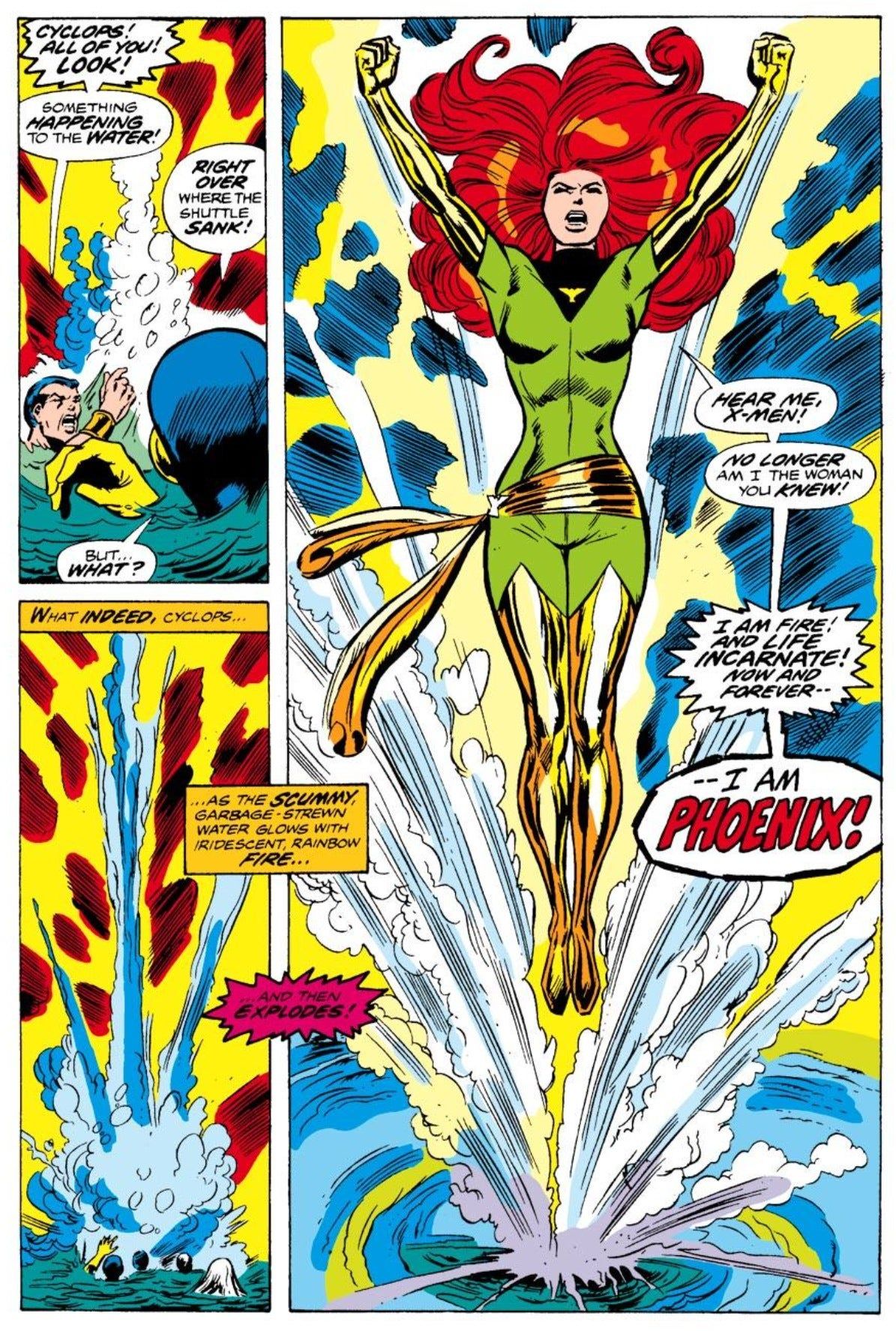
This sacrifice proved to be short-lived, as the shuttle crash-lands into Jamaica Bay, where the X-Men arrive unharmed. Unharmed too is Jean, now dressed in a new costume and calling herself Phoenix. “Hear me, X-Men!”“ she calls out, soaring upward from the water. “No longer am I the woman you knew! I am fire! And life incarnate! Now and forever”¦ I am Phoenix!”“ Jean speaks truly in this scene. In a real way, the Jean Grey of old died during the shuttle crash in Jamaica Bay, although the X-Men survive. Though Jean emerges, it“s as a different being entirely, reborn as Phoenix. The symbolism as water as baptism comes strongly into play with this imagery, played against the fire that represents life. Moreover, Jean embodies the archetypal feminine power, the power of life itself, as the warm nurturer and bringer of life. The rebirth of Jean as Phoenix is physical, but it“s also a spiritual rebirth, since this change leads into a very different Jean Grey during the course of Claremont“s next few years.
At this time, Phoenix has not been conceived as a separate cosmic entity. That evolved later, first with her time-lost daughter Rachel“s acceptance of the Phoenix Force, but also with the retcon that lead to Jean“s resurrection. This moment, with the rise of Phoenix from the waters of Jamaica Bay, is catalyst to a series of rebirths for the character, some unintended at the time Claremont wrote the scene. One could even suggest that the birth of Phoenix is the birth of Jean Grey“s ascendancy as a character, and maybe even for Claremont“s run as we know it today. In future installments, we“ll explore those ramifications and the revisions of the Phoenix concept.
For the next several storylines, Jean“s transformation becomes a subplot as Jean herself slips briefly into the background. Claremont does discuss the implications and how Jean“s change affects everyone else, but especially Cyclops and Charles Xavier, the two who mean the most to her. Jean takes a break from the team to recover and build her new life, where she“s working as a model and rooming with Misty Knight. In the meantime, Scott would stay with Jean, while the other X-Men took a vacation to Banshee“s ancestral home in Ireland.
This leads into a series of short arcs where villains would take shots at the new X-Men, all set up by a Shi“Ar agent named Erik the Red. The Shi“Ar Emperor D“Ken had sent Erik after Xavier, since he was mind-linked with the renegade Princess Lilandra. This allowed Claremont to reintroduce classic villains to the series in new ways, starting with the Juggernaut. Claremont introduced Black Tom Cassidy and his longtime friendship with Juggernaut, based on mutual hatred of their family members (Banshee and Xavier). This partnership proves to be effective at first, partly due to surprise but also because the X-Men were acting without Scott“s leadership for the first time since the team debuted. After Scott“s return, the team would also face Magneto for the first time, an encounter that ended in the team retreating to save Xavier. This was a period where the X-Men would learn their limits, sometimes with grave consequences.
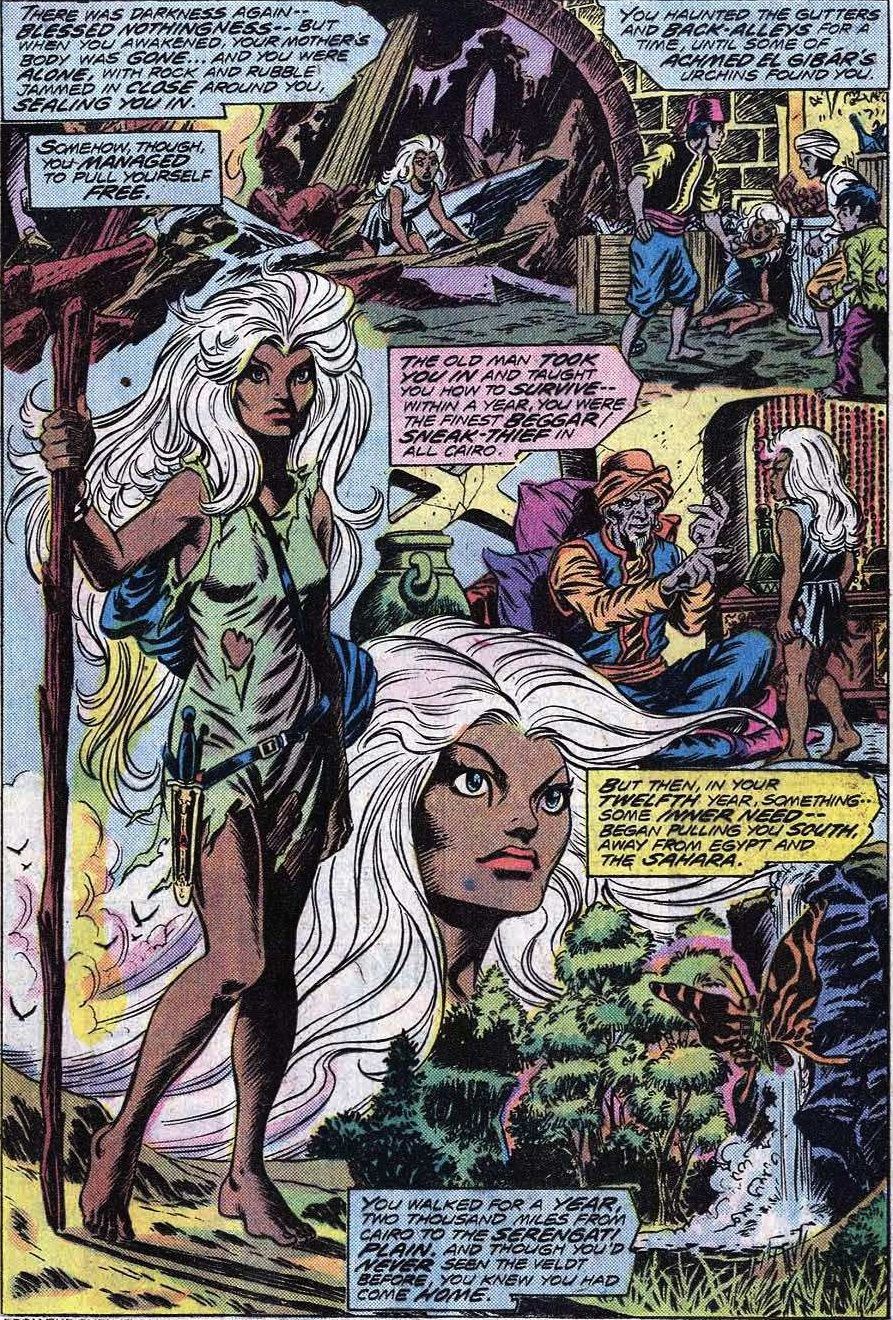
Still, Claremont never lost sight of his heroines, even when Jean wasn“t the focus. During the Juggernaut storyline, Claremont also turns his attention more seriously to Storm, as he fills in gaps in her backstory. Up until this point, all we knew about Ororo before her joining the team was that she was a local weather goddess in Kenya. In this new expanded version, Claremont establishes that Ororo was the daughter of an African princess and an American photojournalist who died in Cairo following the downing of a French fighter jet. It“s here that Claremont first establishes that Ororo had been a skilled thief and pickpocket under the tutelage of Achmed El-Gibar, a point that he would build on in later stories. Most importantly, Claremont gave Ororo a character-defining vulnerability””her post-traumatic claustrophobia, the result of Ororo having been buried alive. Ororo“s learning to conquer her fear to help her friends plays a large role in the X-Men“s victory over Black Tom and Juggernaut, but it would be a recurring problem for her over the years.
The first Claremont/Cockrum run would end with the conclusion of the Phoenix Saga. The X-Men return home to save Jean and Xavier, who have been attacked by a manipulated Firelord, a former Herald of Galactus. This leads to a fierce battle between Phoenix and Firelord, mainly to establish how powerful Phoenix has become. Claremont and Cockrum had wanted Phoenix to be a player on the level of Thor, a point confirmed even by Firelord“s own dialogue. Though an entertaining display, it“s ultimately just a prologue to set up the true battle”¦ the X-Men“s quest to stop the mad Shi“Ar Emperor D“Ken from destroying the universe with the powerful M“Kraan Crystal.
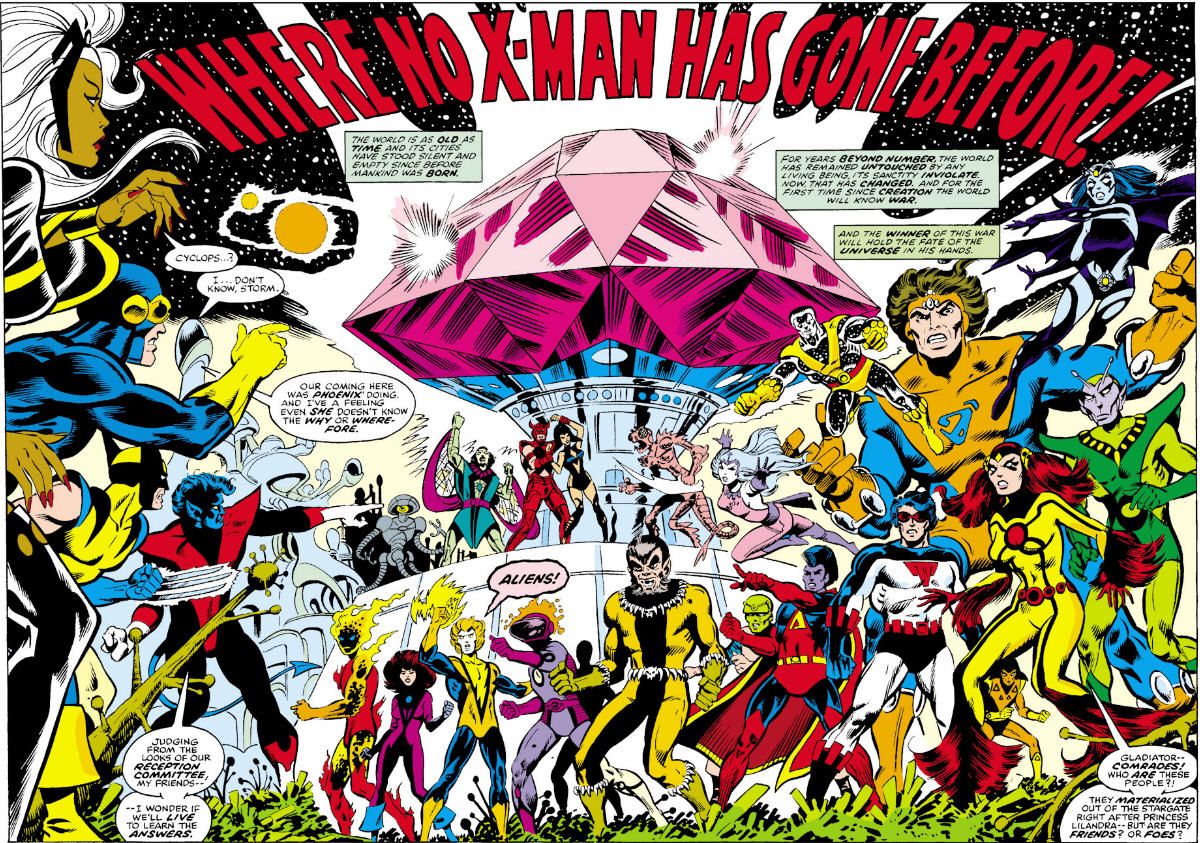
Most of the Phoenix Saga consists of the X-Men“s first battle with the Shi“Ar Imperial Guard, led by the powerful Gladiator. Claremont and Cockrum honestly do not hide their influences with these characters, who are Marvel analogues of DC“s Legion of Super-Heroes. This is most obvious in the case of Gladiator, and his writers have never been shy in wearing his Superman influences. In fairness, Cockrum had previously worked on the Legion, and it may be some of these character designs were based on ideas he“d had for the Legion before moving on to Marvel. Even some of the X-Men like Storm and Nightcrawler were based on Cockrum“s old Legion ideas. In any case, there is entertainment value in watching the X-Men face off against the Imperial Guard, and it“s the first of several encounters between the two groups. This is also the introduction of the Starjammers, a group of space pirates opposing D“Ken, led by Scott“s father Corsair.
Unfortunately, Cockrum leaves the book before the Phoenix Saga is concluded, but his influence is still felt on the storyline. Stepping in as Cockrum“s replacement is the up-and-coming John Byrne, who would become nearly as iconic as Claremont on these characters. Byrne leaves an immediate visual impact on the book, and his artwork would only get better from here. In the meantime, he shows respect for Cockrum“s contributions to the book while also leaving his own mark on the title.
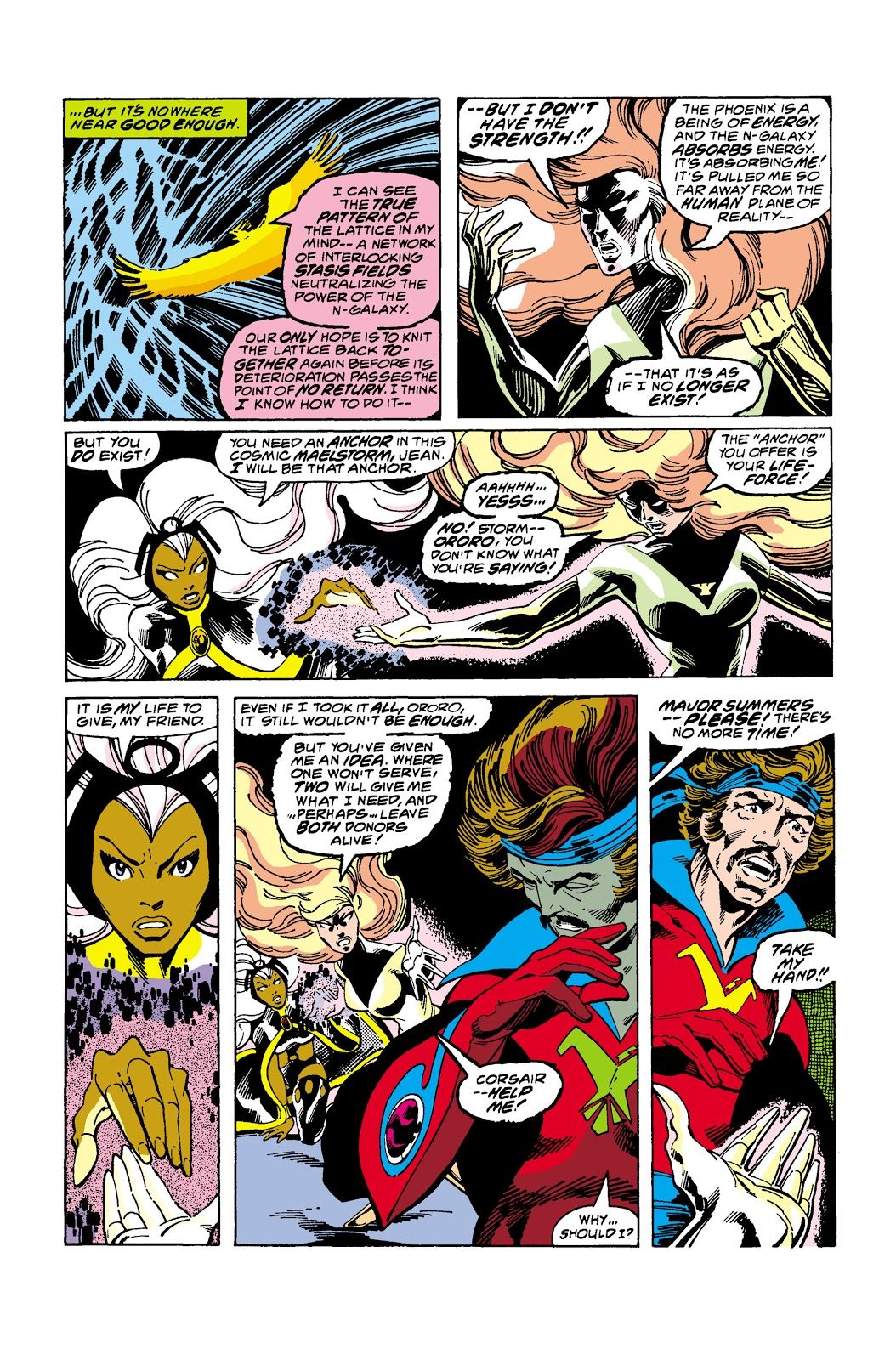
The Phoenix Saga concludes with Jean Grey“s decision to repair the fracturing M“Kraan Crystal, which contains a neutron galaxy that threatens all existence. Jean taps into the Phoenix, pushing her newborn power to its limits as she repairs the bonds that contain the neutron galaxy within the crystal. In a way, this is Jean tapping into the archetypal feminine, using her power to heal what is broken and to give life to a dying universe. She also uses her power to bring understanding and to repair emotional bonds, such as when she informs Corsair that Cyclops is his lost son. While Jean has become a truly powerful force to contend with, Claremont gives her a feminine strength born from love. That love and goodness would be severely tested in later years.
The first Claremont/Cockrum run would end here, leading to perhaps this title“s most definitive and iconic run. However, this is not the last time Claremont and Cockrum would work together on these characters, and their work on this book would have lasting impact for decades. The original Phoenix Saga would even be adapted, most successfully on the 90“s X-Men: The Animated Series. Still, there were even greater heights to come. Next time, we“ll discuss the beginning of the classic Claremont/Byrne era, considered by many to be the glory years of the X-Men.
Author Profile
- Steve Sellers had been a fan of superheroes ever since Superman: The Movie. But it took the JSA, the Legion of Super-Heroes, Dragonlance, Lord of the Rings, Twilight Zone, and Chris Claremont's legendary run on the X-Men to make him a writer and a longtime fan of comics, fantasy, and science fiction. Steve is the co-creator of WHITE DRUID & MICHAEL NERO and GUARDIANS OF ELAYIM for Omen Comics, and he is also the creator of BLITZ and SHOCKWAVE for Revelation Comics (an imprint of Omen Comics).





